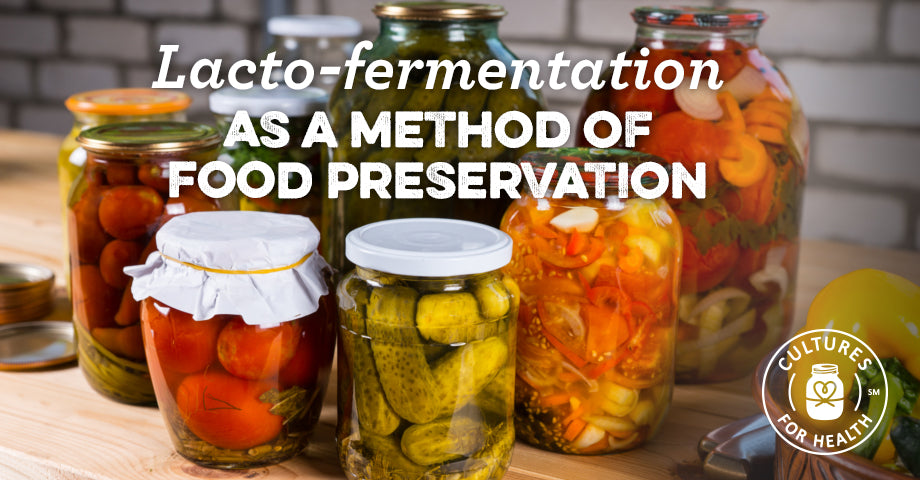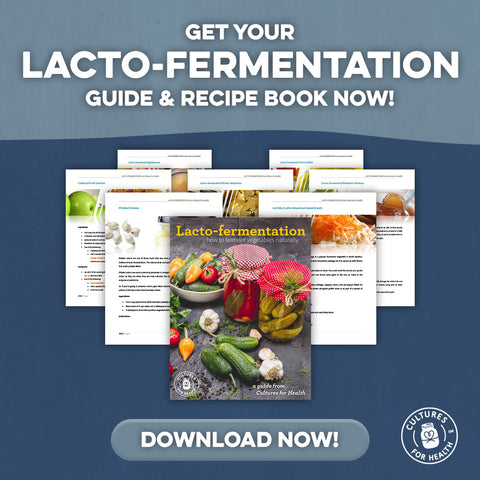
Lacto-fermentation, in one form or another, has existed in just about every society and culture that we have record of. From sauerkraut in Germany to kimchi in Korea, lacto-fermented foods are prevalent in pre-industrial societies.
The reason for this is simple: The process of fermentation allows foods to stay edible longer. While a cabbage might rot within a couple of weeks at room temperature, sauerkraut can be kept for months, and in some cases years.
HOW FERMENTATION PRESERVES FOOD
The brine used in lacto-fermented foods creates an anaerobic, acidic environment. Anaerobic means that there is no oxygen present in the environment. Many lacto-fermented recipes emphasize keeping the food below the level of the brine because the “bad guys” are unable to grow in this environment, while the “good guys” have everything they need.
Many people familiar with home food preservation are concerned about botulism. Botulism is a toxin produced by C. Botulinum bacteria and cannot survive in an acidic environment. The acids produced by fermentation protect against the toxin, and help to make lacto-fermentation one of the safest methods of food preservation.
Learn the basic process of lacto-fermenting vegetables and start preserving at home.
THE BENEFITS OF LACTO-FERMENTATION
There are advantages of lacto-fermentation over other methods of food preservation.
The End Product Has More Nutrients
In the canning and freezing process some or all of the nutrients present in the freshly picked food are lost. Lacto-fermentation enhances the nutritive value of the food, and many enzymes and probiotics are created.
The Process is Easier
Canning food is a lot of work. Jars must be sterilized, packed properly and boiled for a long period at the proper temperature. Pressure canning equipment needs to be checked regularly by a professional. Lacto-fermentation is as simple as chopping up some vegetables, mixing them with some salt and maybe water, and allowing them to ferment. That’s it!
It is Sustainable
Where freezing and canning require a lot of energy in the form of gas or electricity, lacto-fermentation can be done easily with neither of these things. For people looking to be self-sufficient or less dependent on fuels in general, lacto-fermentation is definitely the way to go.
Lacto-fermentation is safe, easy, healthy, and economical. Gallons of lacto-fermented vegetables may be kept in cool storage for months, providing enzyme-rich foods during the darkest periods of the year when fresh produce is scarce.

















